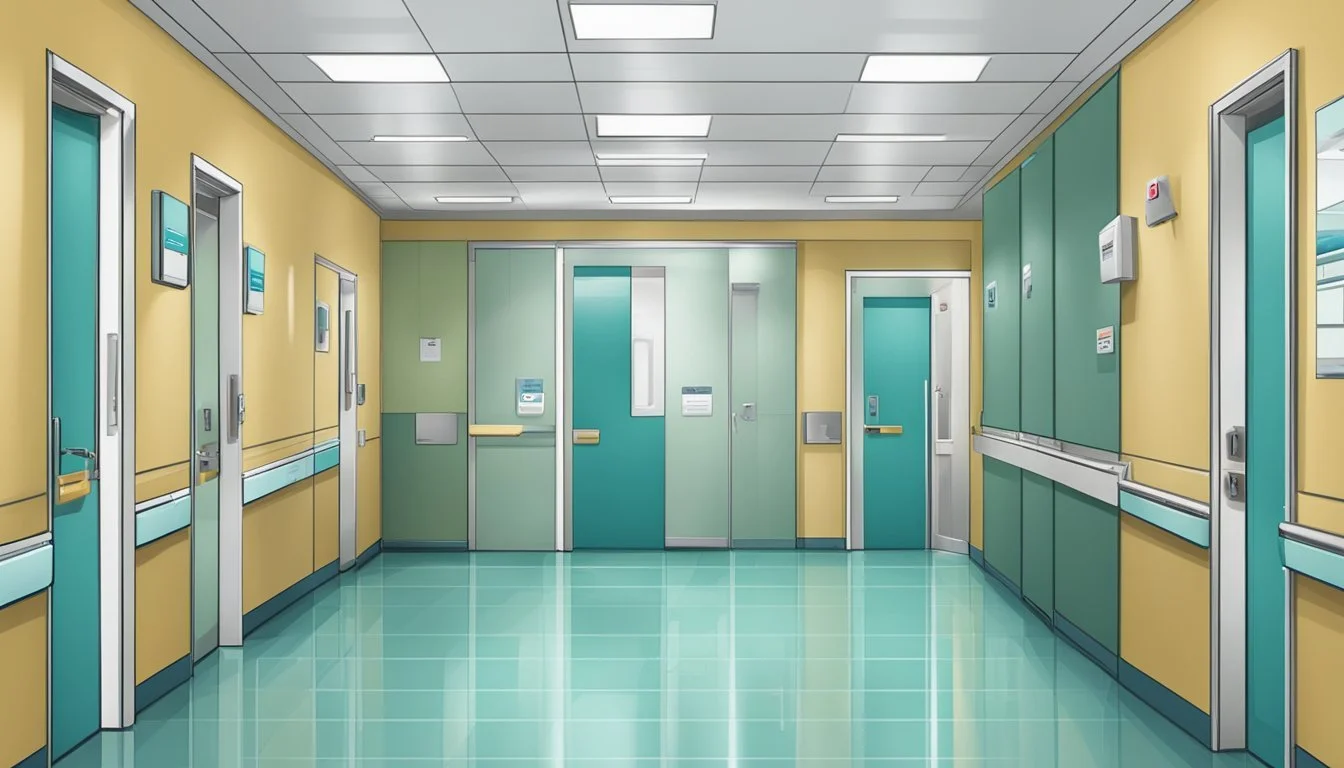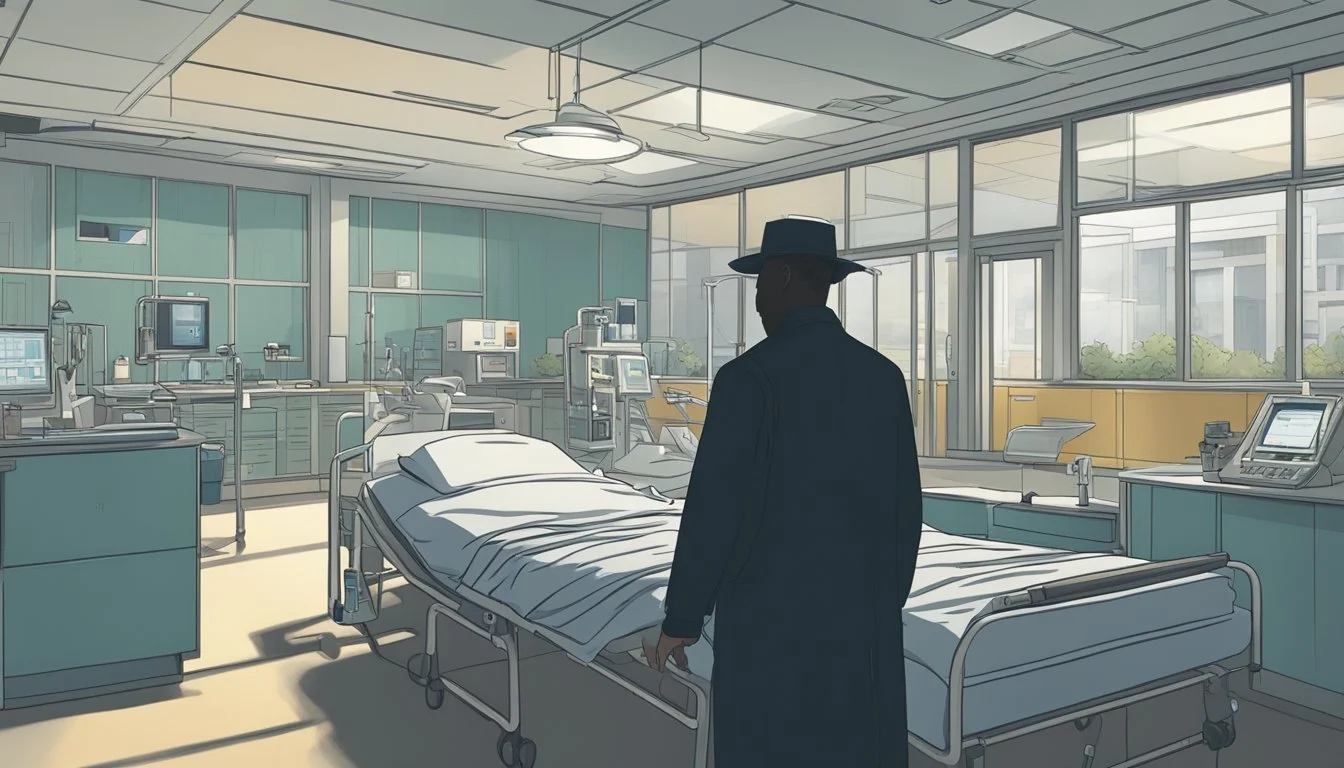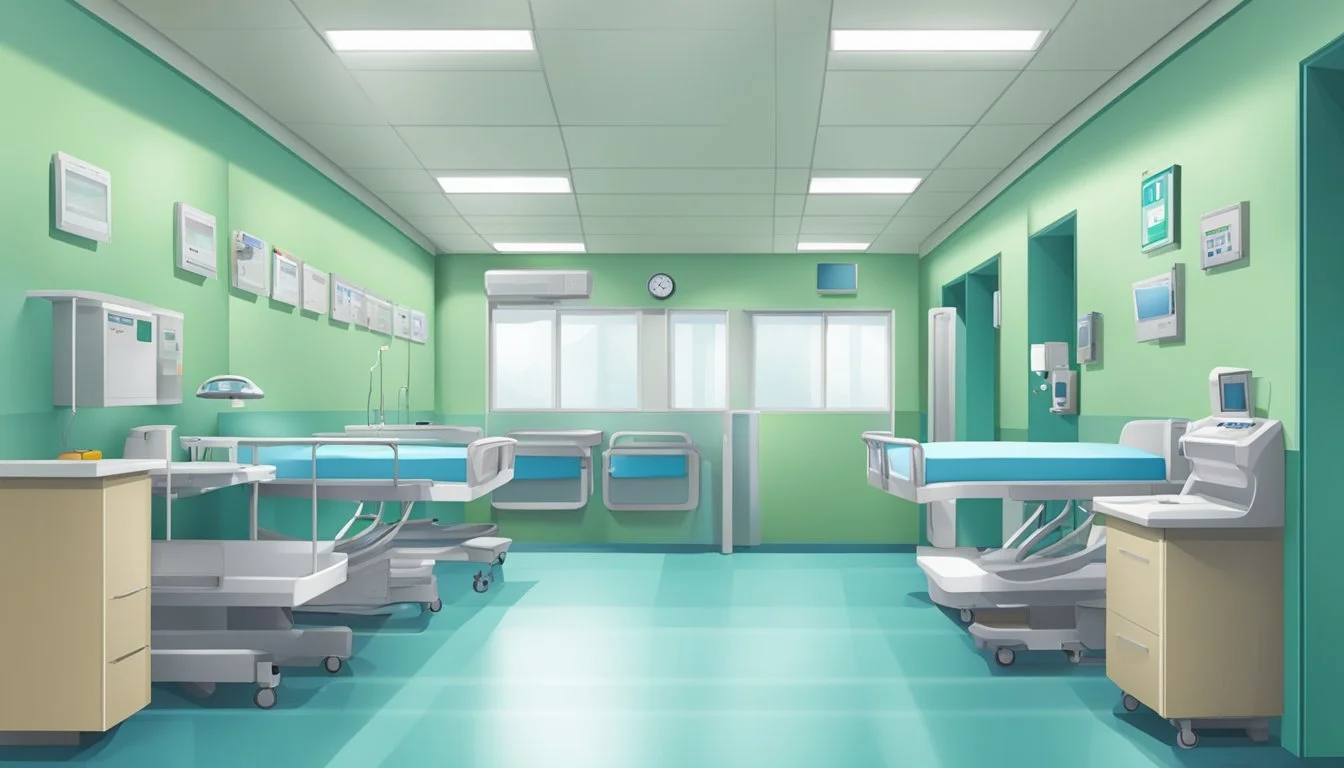Charles Cullen: 9 Hospital Policies the Angel of Death Exploited
How a Serial Killer Nurse Evaded Detection
Charles Cullen, a former nurse nicknamed the "Angel of Death," committed a series of murders across multiple hospitals in New Jersey and Pennsylvania. His ability to exploit hospital policies and procedures allowed him to continue his killing spree for over 16 years before finally being caught and convicted.
Cullen's case exposed significant vulnerabilities in healthcare systems, highlighting the need for stricter protocols and oversight in medical facilities. By examining the policies Cullen exploited, healthcare institutions can implement stronger safeguards to prevent similar incidents and protect patient safety. This article delves into nine specific hospital policies that Cullen manipulated during his deadly career.
1) Lack of Staffing Verification
Charles Cullen exploited a critical flaw in hospital hiring practices: inadequate verification of employment history. Many hospitals failed to thoroughly check his previous work experiences, allowing him to move from one facility to another despite suspicious circumstances.
This oversight enabled Cullen to continue his deadly activities for years. Hospitals often neglected to contact his former employers or investigate gaps in his employment record, which could have revealed concerning patterns or terminations.
The absence of a comprehensive background check system across healthcare institutions created a dangerous loophole. Cullen's ability to secure new positions despite being under investigation or forced to resign from previous roles highlighted this systemic weakness.
Some hospitals prioritized filling staffing shortages quickly over conducting thorough vetting processes. This urgency sometimes led to rushed hiring decisions, overlooking red flags in Cullen's employment history.
The lack of a centralized database for tracking healthcare workers' employment records further complicated the verification process. This made it easier for Cullen to obscure his problematic past and continue gaining access to vulnerable patients.
2) No Interdisciplinary Communication
Charles Cullen took advantage of the lack of communication between different departments within hospitals. This gap allowed him to move undetected between units and facilities.
Hospitals often operate in silos, with limited information sharing between departments. Cullen exploited this weakness by transferring between units and even institutions without raising suspicion.
The absence of a centralized system for tracking employee misconduct across different hospitals further enabled Cullen's activities. He could resign from one facility and quickly find employment at another without thorough background checks.
Nursing departments, pharmacy units, and administration offices frequently failed to communicate effectively about medication discrepancies or patient concerns. This breakdown in interdepartmental communication created blind spots that Cullen skillfully navigated.
By working night shifts, Cullen minimized his interactions with staff from other departments. This isolation further reduced the chances of his suspicious behavior being noticed or reported across different hospital units.
3) Ignored Patient Care Protocols
Charles Cullen exploited lax enforcement of patient care protocols during his time as a nurse. He frequently disregarded standard procedures for medication administration and patient monitoring.
Cullen often administered medications without proper authorization or documentation. He bypassed safeguards like double-checking dosages with other nurses or obtaining physician approval for non-routine medications.
Patient monitoring protocols were also neglected. Cullen failed to consistently check vital signs or record patient status updates as required. This allowed him to conceal signs of patient distress after administering unauthorized drugs.
Many hospitals where Cullen worked had inadequate systems for tracking medication inventory and usage. He took advantage of this to access and divert drugs without detection.
Cullen's blatant disregard for protocols went largely unnoticed due to understaffing and overworked hospital personnel. His night shift position provided less oversight, enabling him to deviate from proper procedures.
By ignoring established patient care protocols, Cullen was able to harm patients while avoiding immediate suspicion. Stricter adherence to and enforcement of these protocols could have limited his ability to commit his crimes.
4) Concealed Medication Errors
Charles Cullen exploited hospital policies that allowed medication errors to go unreported or be concealed. Many facilities lacked robust systems for tracking and investigating discrepancies in medication administration.
Cullen took advantage of this gap by deliberately altering patient medications or administering unauthorized drugs. He often targeted medications that could cause rapid decline or death when given in improper doses.
The lack of consistent medication reconciliation processes across shifts created opportunities for Cullen to make changes without detection. Some hospitals also had inadequate controls on access to medication storage areas.
Cullen's status as a respected nurse meant his explanations for medication discrepancies were often accepted without thorough investigation. This allowed him to continue his pattern of harming patients through medication errors for years across multiple hospitals.
Improved policies around medication error reporting, investigation, and prevention could have potentially limited Cullen's ability to harm patients undetected. Stricter oversight of high-risk medications may have also hindered his methods.
5) Forged Medical Records
Charles Cullen exploited lax oversight of medical records to hide his deadly activities. He falsified patient charts and medication logs to conceal the lethal doses he administered.
Cullen took advantage of paper-based record systems that were easier to alter than modern electronic health records. He would often make entries in charts after the fact to create false alibis.
The nurse manipulated medication administration records to show that patients received standard treatments rather than the fatal overdoses he gave them. This allowed his actions to go undetected for years.
Cullen also accessed and modified records of patients who were not under his direct care. He used his hospital credentials to view and alter files across multiple departments.
The ease with which Cullen tampered with official medical documentation highlighted serious vulnerabilities in hospital record-keeping practices. His ability to forge records unnoticed enabled his killing spree to continue across multiple facilities.
6) Absence of Continued Education
Charles Cullen exploited the lack of ongoing education requirements for healthcare professionals in many hospitals. Some facilities did not mandate regular training updates on medication administration, patient safety protocols, or recognizing signs of abuse.
This gap allowed Cullen to continue his deadly activities without detection for years. He was able to manipulate medication systems and bypass safety checks due to outdated knowledge among staff.
Hospitals that did not prioritize continued education missed opportunities to reinforce proper procedures. They also failed to keep staff informed about emerging best practices in patient care and safety.
Cullen took advantage of this complacency, using outdated or lax protocols to access and administer unauthorized medications. More rigorous ongoing training could have better equipped staff to spot and report suspicious behavior.
Regular education on medication safety, documentation practices, and reporting procedures might have created more vigilant environments. This could have made it harder for Cullen to carry out his crimes unnoticed across multiple hospitals.
7) Inadequate Patient Monitoring
Charles Cullen exploited the lack of rigorous patient monitoring systems in hospitals. Many facilities failed to implement comprehensive tracking of patient vital signs and medication administration.
This oversight allowed Cullen to administer unauthorized medications without detection. He often targeted patients during night shifts when staffing levels were lower and supervision was reduced.
Some hospitals lacked proper protocols for documenting medication access and disposal. This made it difficult to trace suspicious patterns or discrepancies in drug inventories.
Advanced monitoring technology, such as automated medication dispensing systems with individual user tracking, was not widely implemented. Such systems could have flagged unusual medication requests or access patterns.
Regular audits of patient charts and medication records were often insufficient or inconsistent. This created opportunities for Cullen to alter documentation or conceal his actions.
Improved patient monitoring policies, including frequent vital sign checks and strict medication administration protocols, may have helped identify concerning trends sooner. Enhanced oversight could have potentially limited Cullen's ability to harm patients undetected.
8) Improper Use of Restraints
Charles Cullen exploited lax policies regarding patient restraints to carry out his crimes. Hospitals often failed to properly monitor and document the use of physical restraints on patients.
This oversight allowed Cullen to restrain victims without arousing suspicion. He could then administer lethal medications to immobilized patients who were unable to call for help or resist.
Some facilities had insufficient protocols for authorizing and reviewing restraint use. This created opportunities for Cullen to act without proper checks and balances from other staff members.
Inadequate training on restraint policies left many healthcare workers unaware of proper procedures. As a result, Cullen's suspicious restraint practices went unnoticed or unreported by colleagues.
Lack of clear documentation requirements made it difficult to track patterns of restraint use. This allowed Cullen to repeatedly restrain certain patients without raising red flags in the system.
Hospitals' failure to strictly limit access to restraint equipment also enabled Cullen's actions. He could easily obtain restraints without justification or oversight from supervisors.
9) Neglected Safety Precautions
Charles Cullen exploited numerous safety gaps in hospital protocols during his 16-year killing spree. Many facilities failed to implement basic safeguards that could have prevented patient deaths.
Hospitals often neglected to properly secure medication storage areas. This allowed Cullen easy access to lethal drugs like insulin and digoxin. He was able to obtain these substances without proper documentation or oversight.
Patient monitoring systems were frequently inadequate or nonexistent. This made it difficult to detect sudden changes in patient conditions or unexplained deaths. Cullen took advantage of this lack of surveillance to carry out his crimes undetected.
Hospitals also failed to conduct thorough background checks on new hires. Despite being fired or forced to resign from multiple facilities, Cullen easily found new nursing positions. Proper vetting could have revealed his troubling employment history.
Inconsistent reporting of suspicious incidents allowed Cullen's behavior to go unchecked. Many hospitals did not have clear processes for staff to report concerns about coworkers or unusual patient deaths.
Background of Charles Cullen
Charles Cullen's journey from troubled youth to notorious serial killer spanned decades. His early life was marked by tragedy and mental health struggles, while his nursing career provided access to vulnerable patients across multiple hospitals.
Early Life
Charles Cullen was born in West Orange, New Jersey in 1960. He experienced significant trauma as a child, losing his father at a young age and witnessing his mother's death in a car accident when he was 17. Cullen attempted suicide multiple times in his youth.
After high school, he joined the U.S. Navy, serving on a submarine team before being discharged in 1984. Cullen then enrolled in nursing school at the Mountainside Hospital School of Nursing.
Career in Nursing
Cullen began working as a nurse in 1987 at Saint Barnabas Medical Center in New Jersey. Over the next 16 years, he moved between 9 hospitals in New Jersey and Pennsylvania.
His employment history was characterized by frequent job changes and disciplinary issues. Despite this, Cullen managed to secure new positions due to nursing shortages and lax background checks.
Throughout his career, Cullen had access to medication storage areas. He exploited this to obtain drugs like digoxin and insulin, which he used to poison patients.
Hospital Policies Exploited
Charles Cullen took advantage of several systemic weaknesses in hospital policies and procedures. These vulnerabilities allowed him to carry out his crimes over many years across multiple facilities.
Supervision Shortcomings
Cullen exploited lax oversight in many hospitals where he worked. Night shifts often had minimal supervision, giving him ample opportunity to access patients undetected. Some facilities failed to properly monitor medication administration or investigate suspicious deaths.
Understaffing was another key issue. Overworked nurses had less capacity to notice irregularities in patient care or medication use. This created blind spots that Cullen used to his advantage.
Background check policies also fell short. Despite troubling incidents at previous jobs, Cullen was able to move between hospitals with ease. More thorough vetting may have revealed red flags in his employment history.
Medication Access Controls
Inadequate controls on medication access were a critical vulnerability. Many hospitals lacked robust systems to track drug inventory and usage. This made it difficult to detect when Cullen was diverting medications for nefarious purposes.
Some facilities used outdated medication dispensing systems that were easy to manipulate. Cullen found ways to override safeguards and obtain drugs without proper authorization.
Loose practices around wasting unused medications also created opportunities for abuse. Cullen could claim to discard drugs while actually keeping them for later use on victims.
Reporting and Whistleblowing Mechanisms
Ineffective reporting systems hindered efforts to identify Cullen's pattern of behavior. Many hospitals lacked clear protocols for staff to voice concerns about suspicious deaths or colleague misconduct.
Fear of legal liability often discouraged facilities from thoroughly investigating incidents or sharing information with other hospitals. This allowed Cullen to move on to new jobs despite mounting suspicions.
Some hospitals prioritized avoiding negative publicity over patient safety. They failed to report troubling incidents to proper authorities, enabling Cullen to continue his crimes elsewhere.









